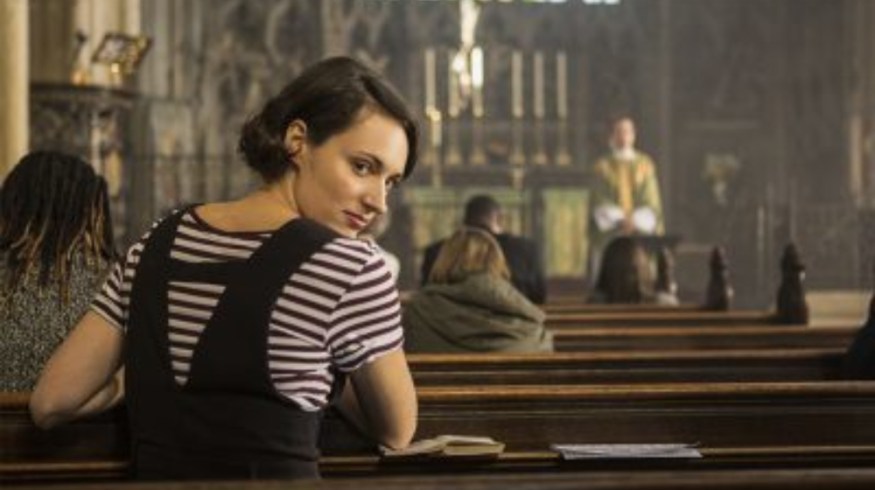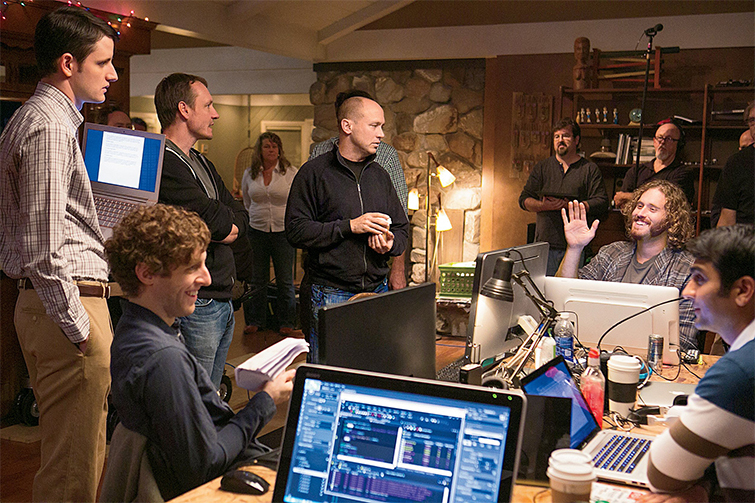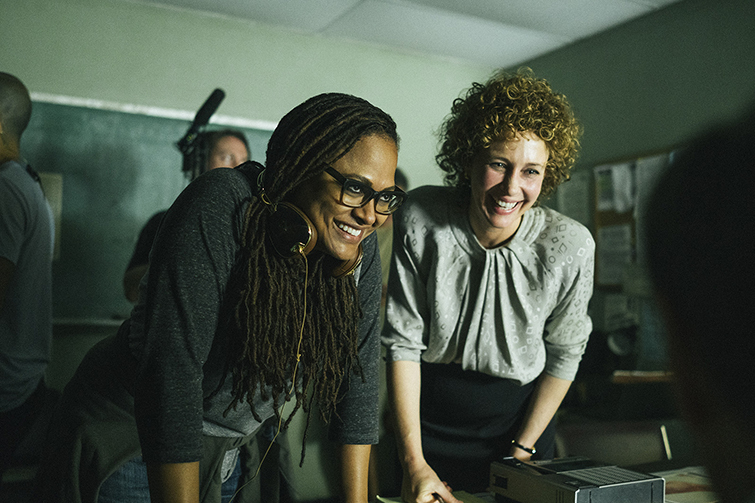
Breaking Down the Multifaceted Role of a Showrunner
Take a look at the day-to-day of the all-important television or streaming program showrunner. What can you can learn from this multifaceted role?
As the film and video industry continues to find ways to adapt to changes in audience habits, television and episodic streaming content becomes an increasingly viable option for aspiring content creators seeking long-term success. Don’t believe me? Just ask Disney.
So, how does one break into world of television/streaming production? And, what do those productions even look like? The answer to many of your questions actually hinges on one important individual — the all-powerful showrunner.
Most of us can rattle off a lengthy list of our favorite directors, DPs, and actors. So, why is it that so few of us know the name of the single most important person behind our favorite TV and streaming title?
The showrunner is the key individual (or individuals) responsible for nearly every aspect of your favorite program, and understanding the position is critical to anyone interested in this industry. Let’s take a closer look at what it takes to get to started in the role and breakdown its associated creative and managerial responsibilities.
What Is a Showrunner?
Since the showrunner role is so important to a program, you’d think it would be an easy term to define. And, while the title of showrunner has evolved over the years, and may mean something different depending on what area of the world that you’re working, it really has become a catch-all term for the leading producer of a program.
From its Wikipedia page, a showrunner is defined as the person who “has creative and management responsibility of a television series production, through combining the responsibilities of employer and, in comedy or dramas, typically also character creator, head writer, and script editor.”
That’s all well and good, but I’d probably just simplify the definition to “the leading producer on a program who oversees every element of the project’s creation, from the initial pitch to the final edits and marketing.” Regardless of your preferred definition, the roles and responsibilities are quite numerous indeed.
The Role and Responsibilities

Seasoned showrunner Mike Judge has helped shepherd many television programs to life, including his most recent Silicon Valley. Image via HBO.
I actually have some first-hand experience in this department, as I was the showrunner (and creator, producer, and director) of a television program in film school. While it didn’t go out on Netflix, it did broadcast in our college town and won some student Emmy awards. Most importantly, it taught me quite a bit about the huge amount of work that falls on a showrunner to pick up a project and see it through to the end.
I divided the roles of a showrunner into five categories — development, pre-production, production, post-production, and marketing. Let’s take a look at each.
- Development: While not always the case, more often than not a showrunner is the one who comes up with the initial idea or inspiration for a program and begins the process of pitching it around and fleshing it out. Whether it’s to Hollywood producers, studio heads, or local television, the showrunner spends months — if not years — in development just trying to get the concept green-lit.
- Pre-Production: Once the project is tapped to move forward, the showrunner begins to put together a core crew — including writers, director(s), cast and crew, and a group of fellow producers that will oversee everything from budgets to contracts to scripts and shooting schedules.
- Production: Again, not every showrunner’s role will be the same. Some might be more hands off on the actual production, but there are plenty of examples of showrunners who also serve as directors or remain close to the day to day of production. With so much invested already, a showrunner makes sure production goes as smoothly — and correctly — as possible.
- Post-Production: Depending on how a program is being shot and released, the post-production process could overlap with production. This requires a steady hand, as the showrunner guides individual episodes along toward broadcast/release while still keeping an eye on the rest of the season. Additionally, a showrunner’s post-production duties involve managing specialists like narrative editors and color experts while keeping tabs on things like sound design and graphics/VFX.
- Marketing: Finally, the role of a showrunner doesn’t end once a program goes live. Instead, it takes on a new life of its own, as a showrunner would be highly invested in making sure the program is favorably reviewed and heavily marketed in order to finds its audience. From viral campaigns to television spots, a showrunner would work with their marketing team to do everything they can to help their show take off.
Famous Showrunners from Your Favorite Shows

Ava DuVernay is another great example of a showrunner who made her way over from film as the leading force behind her program When They See Us. Image via Netflix.
Perhaps the best way to illustrate who a showrunner is and what they do is to look at some notable examples from some of your favorite shows and programs over the years. Here, I’ve included some of my favorite showrunners. I find it fascinating to see how each showrunner has been able to put so much of themselves into their projects, yet also help a program thrive on its own, creating its own subsequent voice and stars.
- Ava DuVernay (When They See Us)
- Michael Schur (The Good Place, Parks and Recreation)
- Phoebe Waller-Bridge (Fleabag)
- Mike Judge (King of the Hill, Silicon Valley)
- Roberto Aguirre-Sacasa (Glee, Riverdale)
- Lee Daniels (Empire)
- Matt and Ross Duffer (Stranger Things)
- Shonda Rhimes (Grey’s Anatomy)
- J.J. Abrams (Alias, Lost)
- Kenya Barris (Black-ish)
- Peter Berg (Friday Night Lights)
- Dan Harmon (Community, Rick and Morty)
This list is a solid example of the comprehensive responsibilities of a showrunner, and it showcases the diversity of each showrunner and their specific projects. For example, while Phoebe Waller-Bridge might have been the creator, writer, and star of Fleabag, Mike Judge stayed a bit more behind-the-scenes on Silicon Valley by delegating responsibilities to his hand-picked writers, directors, and crew.
Lessons on How to Get Started
If you’d like an even more in-depth look into the life of a showrunner, check out the above video featuring Breaking Bad showrunner Vince Gilligan. In Gilligan’s case, his role as showrunner covered every aspect of writing, directing, and post-production oversight, which allowed him to keep his vision consistent across every aspects of the award-winning program. For those interested in working in this industry or taking a stab at showrunning, the best advice is to focus on one of these three areas: producing, writing, and/or directing.
These three areas are the most critical to getting a show off the ground, and having a strong background in at least one of these areas would be your best bet. If you can work as a producer and help other shows find success, you can start to pitch your own. If you can work in a writers’ room, you can hone your writing chops, experiment on your own scripts, and work on moving up toward the role of a head writer. Or, if you want to focus on directing, work toward directing a short film — or even feature — that gets some accolades and lands you some connections so you can push to helm your own multi-episode project.
Regardless of your path, understanding the role of the showrunner and following the examples of some of your favorites is a smart way to stay connected with this budding industry as you navigate your career and develop your own projects.
For more insight into film and video production roles and careers, spend some time with the following resources:
- 5 Reasons Why You Should Shoot Your Own Digital Web Series
- Filmmaking Fundamentals: Using Blocking to Get Your Scenes Moving
- Is Episodic Content the Future of Long-Form Documentary Filmmaking?
- How Filmmakers Use Allegory in Film and Video Projects
- Upgrade Your Production with These Overlooked, but Essential Roles
Cover image featuring Bryan Cranston, Aaron Paul, and showrunner Vince Gilligan via Featureflash Photo Agency.





